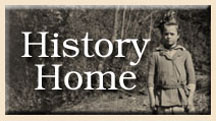

School and Community Growth
Prior to 1912, Gatlinburg, Tennessee was, to borrow an old Southern colloquialism, little more than a “wide spot in the road.” The town consisted of six homes, two schoolhouses, two churches, a general store, and a blacksmith shop; and there was nothing at all to indicate that the town existed as a civic entity, or that its citizens were interested in establishing an organized central government. With the exception of Squire Isaac L. Maples, a lawyer who resided in the town, and who served as a member of the Sevier County judiciary, the town was virtually devoid of public authorities. There was no mayor, no town council, and no civil servants of any kind, save for a handful of letter carriers and deputy sheriffs. For that matter, Gatlinburg had no public utilities such as gas, electricity, telephone/telegraph service, sewers, or running water, despite the fact that such utilities had been common to most American cities and towns since the mid-nineteenth century. The closest thing to government or public works projects that residents encountered was, in fact, the county’s poorly-funded and largely-powerless school board, which owned and operated numerous one-room schoolhouses in Gatlinburg and surrounding communities.
Given Gatlinburg’s profound physical isolation, its poorly-educated, impoverished population, and its lack of level farmland and industrially-valuable raw materials, all of which represented significant barriers to urban/economic development, it is unlikely that, left to its own devices, the town would have soon experienced sudden, dynamic growth, or that outside commercial interests would have invested heavily in its future. True, there were significant timber-cutting operations in the vicinity of Townsend and Elkmont, and every reason to believe that said operations would eventually descend on the Little Pigeon River Valley. But the “timber barons” who operated them were much more interested in harvesting trees and making a profit than they were in promoting local governance, improved public schools, or the development of community spirit. If anything, such notions were something to be discouraged, for they might well serve to diminish the supply of cheap, uneducated labor that was the backbone of Southern Appalachian logging operations.
Of course, one must also account for the local political climate when discussing Gatlinburg’s lack of growth and development. For like many Southerners of their era, the mountaineers were heirs to the Decentralist or “small government” tradition, and as such tended to view county, state, or federally-sponsored action with suspicion, even when said action stood to benefit large segments of the public. Thus Gatlinburg residents’ general unwillingness to support public projects such as universal education, road building, and electrification, or at least, to support them as little as possible.
If ever Gatlinburg was to change, it would need a catalyst -- an outside entity that, by its very presence and force of will, would introduce new ideas and technologies into the otherwise stagnant community. Otherwise, the town might well remain locked in a vicious cycle of poverty and poor education, robbing generation upon generation of their intellectual and economic potential. Fortunately for Gatlinburg, the catalyst came in the form of the Pi Beta Phi Fraternity for Women, which established its settlement school on a hill overlooking the town’s muddy main thoroughfare in February 1912.
The most obvious way in which Pi Beta Phi acted to spark growth and change in Gatlinburg was, of course, by providing residents with access to improved education. This move was very well-timed, albeit unintentionally, for it provided numerous families with the tools they needed to take full advantage of the 1930s tourism boom which followed the founding of the Great Smoky Mountains Park. The March 1943 edition of The Arrow of Pi Beta Phi pointed proudly to members of settlement school’s “first generation” of students who, within a few short years of graduating, had staked their claim among the town’s leading entrepreneurs. For example, Rellie Maples, a University of Tennessee graduate owned the Gatlinburg Inn; Bruce Whaley, also a University of Tennessee graduate owned the Riverside Hotel; Dick Whaley, Bruce Whaley’s brother, owned the Greystone Hotel; Arl McCarter presided over a horseback riding business; and five children of the Los Reagan family opened a woodcraft business. In fact, according to the Mildred Odell Sale, “at least three-fourths of the business houses and property of the Burg is owned and operated by former students [in the 1940s].” Had it not been for Pi Beta Phi, Gatlinburg residents might well have responded differently to the sudden intrusion of outside interests into their world, perhaps even by retreating “further into those Smoky Mountain depths where time seems not to move.”
| <<< Back |
 |
|